#hindustani classical song
Explore tagged Tumblr posts
Text
I have never shared how i sound singing hindustani classical ever. I had a huge gap of around 3 years due to academics, and now that i’m back at it..
saavan ghan garaje, is a bandish from raag miya malhar, a wonderful creation of Miya Tansen ji, one of the nine gems in the court of Akbar. He is believed to have been able to bring rains by singing this raag. This raag is associated with rain, and its rejuvenating effects, and is one of my favourites.
I may not sound too good due to the severe lack of practice, but I am trying to get back at where I was 3 years ago.
#desiblr#desi aesthetic#raag#raag miya malhar#malhar#hindustani classical#music#shastriya sangeet#gaayan#rain#rain song#indian classical music#miya malhar#tansen#singing#singing cover
12 notes
·
View notes
Text
The Natyashastra, an essential text on performing arts in ancient India, lists 8 sthayibhavas or stable emotions.
I found reading about them very interesting and wish to take you through them with a few moodboards, of these moods essential for every Indian art form.
1. Rati (रति): Love, Romance, Attractiveness.

2. Hasya (हास्य): Mirth, Laughter, Jocosity

3. Soka (शोक): Sorrow, Misery, Despair
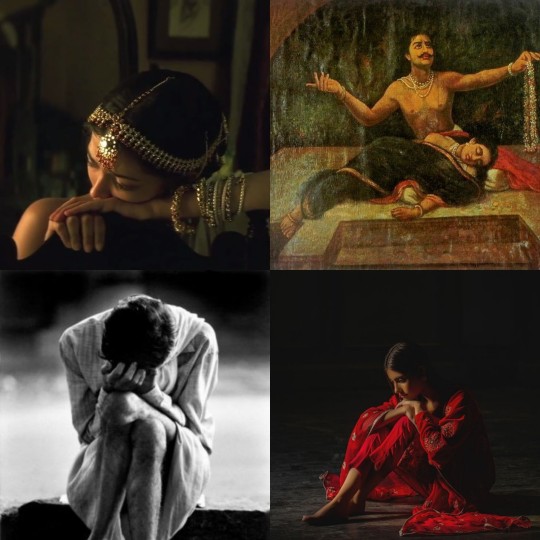
4. Krodha (क्रोध): Anger, Fury, Vex
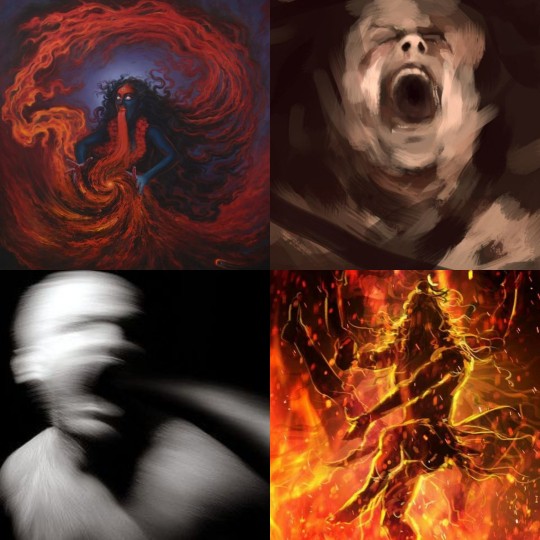
5. Utsaha (उत्साह): Excitement, Eagerness, Anticipation
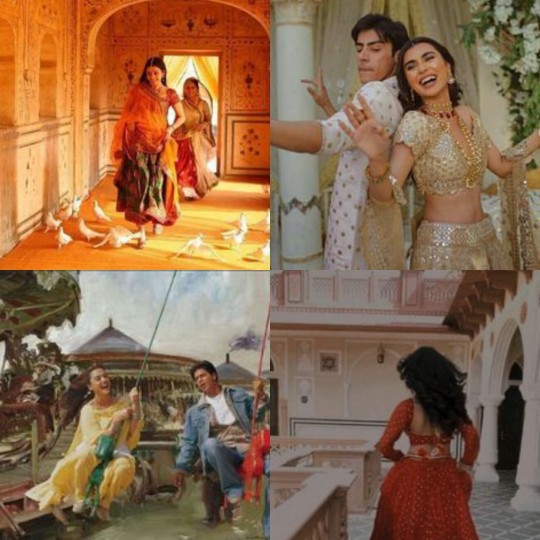
6. Vismaya (विस्मय): Astonishment, Perplexity, Surprise

7. Bhaya (भय): Fear, Terror, Fright
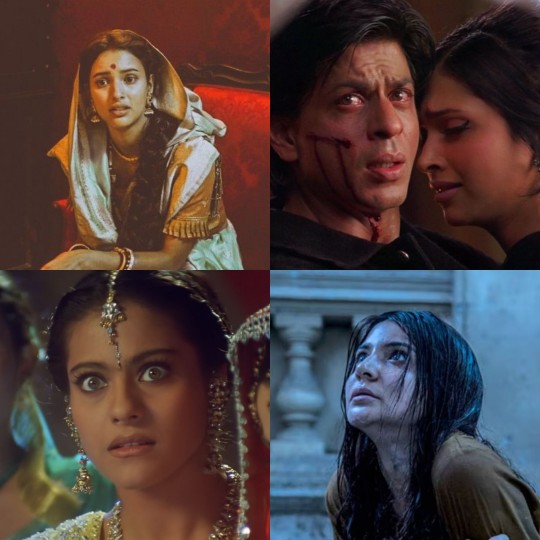
8. Jugupsa (जुगुप्सा): Disgust, Abhorrence, Detestation

#desi#desi tumblr#desi academia#desi girl#desi aesthetic#desiblr#nerd stuff#desi culture#natyashastra#art#art history#desi tag#desiposting#desi humor#being desi#school#desi history#pop culture#bollywood songs#hindustani classical music#the nerd speaks#trust me this works#best way to start the day#bharatanatyam#bollywood#kajol#srk#aishwarya rai#madhubala#nerd talks
44 notes
·
View notes
Text
January grooves:- monthly song collection(wrap)-2024
Photo by Skitterphoto on Pexels.com January feels like an extended chapter of last year; when the new year arrives, most people aren’t eager to start anew. Instead, they cling to the past, their hearts conflicted between celebrating and reflecting on memories. Whereas, music plays a poignant role, setting the tone for the month with a blend of Hindustani classical, ragas, instrumentals, and…
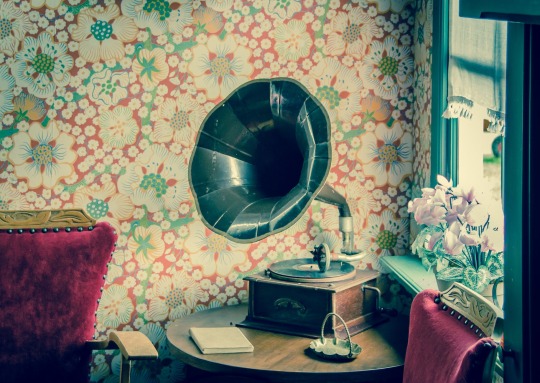
View On WordPress
#2024#blogger#classical music lover#hindustani classical music#january song wrap#monthly wrapup#music#music blogs#music collection#musiclist#song collection#writer
0 notes
Text
youtube
Sanware Tore Bina | Bandit Queen | Raag Jog | Covered by Karthik Mohan
Sanware Tore Bina is a song from the Movie Bandit Queen, set in Raag Jog, it is about a heart that yearns to be with the loved one. Raag Jog has similarities with Naatai raga in Carnatic music. Where Naatai is used in devotional and up beat songs, Raag Jog's notations have a more melancholic vibe. Original Song: Sanware Tore Bina Music Director:Nusrat Fatheh Ali Khan Movie: Bandit Queen
#movie bandit queen#nusrat fatheh ali khan#hindustaniclassicalmusic#indianclassicalmusic#tablaplayer#bollywood movies#hindi movie#hindustanimusic#sanware tore bina#kaushiki chakraborty#hindustani classical music#nusrat fateh ali khan qawwali#karthik mohan#covered by karthik mohan#raag jog#carnatic music#devotional songs#indianclassical#tanpura#instrumental music#independent artist#music producer#north of India#contemporary Indian music#hindi songs#Youtube
1 note
·
View note
Text

Spiritual jazz (or astral jazz)[1] is a sub-genre of jazz that originated in the United States during the 1960s. The genre is hard to characterize musically but draws from free, avant-garde and modal jazz and thematically focuses on transcendence and spirituality. John Coltrane's 1965 album A Love Supreme is considered landmark in the genre.

Origins
Pharoah Sanders in 1981.
Critics usually associate spiritual jazz with the 1960s but the beginnings of the genre can be traced to the 1940s and 1950s in works such as Black, Brown and Beige by Duke Ellington, Zodiac Suite by Mary Lou Williams, and Jazz at the Vespers by George Lewis.
During the 1960s in the United States, the civil rights movement was occurring, causing societal change and political movements. As a result, African-American people gained more freedom to celebrate their culture and to express themselves religiously. This led to a desire to push the conventions of jazz, with some artists choosing to search for transcendence and spirituality in their music.
John Coltrane's 1965 album A Love Supreme is generally considered the genesis of spiritual jazz though Coltrane can be heard developing the sound on the song "Spiritual" recorded four years earlier. Treblezine wrote "Spiritual jazz begins, essentially, with John Coltrane," while Pitchfork wrote "This musical exploration [of spirituality] was epitomized by tenor saxophonist John Coltrane". A Love Supreme and other works by John Coltrane inspired other jazz musicians to create music searching for transcendence. For example, Pharoah Sanders and Don Cherry were considered to have taken inspiration from Coltrane's spiritual works.
After John Coltrane's death in 1967, his wife Alice Coltrane and Sanders—both who had previously played with Coltrane—were some of the first to continue the sound of the genre. Coltrane's 1971 album Journey in Satchidananda combined spiritual jazz with influences from Hindustani classical music, after her journey into spirituality with help from Swami Satchidananda. Journey in Satchidananda used ragas, harps, sitars, and ouds to achieve its sound. Pharoah Sanders took inspiration from Arabic, Indian, and Afro-Cuban music to create early spiritual jazz albums, including Tauhid (1967) and Karma

#african#afrakan#kemetic dreams#africans#brownskin#afrakans#brown skin#african culture#afrakan spirituality#jazz spirituality#spiritual jazz#afro cuban music#pharoah sanders#tauhid#journey in satchidananda#ragas#harps#sitars#ouds#Kamasi Washington#alice coltrane#duke ellington#miles davis#african music
56 notes
·
View notes
Note
I always come for book recs but this time I'm here for sogs/artists recs. Do you or any of your followers have any hindi/Urdu/any regional language non-bollywood song recs? My playlists are lacking!
hi! here's what i have, and i hope everyone adds onto the list. i would also love more music!
just a bunch of gazals
marathi music
vaguely classical maharashtrian stuff
music in a bunch of languages other than english
hindustani classical (instrumental)
kumar gandharva
this is called home, which is just some old music that's almost always playing at my home
47 notes
·
View notes
Text
DOYH: Music Taste
Ranveer Kashyap
classical music is life (both Hindustani and Carnatic)
Lata Mangeshkar, Muhammad Rafi and Kishore Kumar fanboy to the core
will occasionally turn on a qawwali (doesnt want to admit that he's obsessed)
is very picky in english songs, but likes Hozier, Sleeping At Last, and Frank Sinatra
Raghav Patil
knows how to play acoustic and electric guitar
had a rock/punk phase in high school (only with music tho) and still likes them
boy's got Arctic Monkeys and Mother Mother in his blood
fell in love with retro bollywood music after he plugged into one of ranveer's playlists
he is… SO DRAMATIC. Like,, Rahat Fateh Ali Khan level of dramatic. Played Zaroori Tha in his head while crying in chapter 17
Madhuri Gaikwad
oh she's THAT girl
has a beautiful voice, wants to be like her favorite (Asha Bhosle)
can recite every hindi item song by heart, especially old bollywood ones. Chikni chameli? Ek do teen? Badi mushkil? Chane ke khet mein? She knows them all.
surprisingly, she also knows a lot of aartiyaan and mantras, catch her singing Madhurashtakam at any time of the day.
Manorama Shankar
MARWADI SONGS
is lowkey embarrassed by them usually, but push her onto the dance floor in a rajasthani wedding, and she's killing it on every single beat.
has a gym playlist
has a whole playlist of bollywood loverboy songs for madhuri, sings them at random times to make her blush
Shrishti Kaur
HOZIER LESBIAN
mitski too
hates mainstream bollywood songs
likes hard vocals, more for practicing than for listening because she likes pushing her limits
#dancing on your heartstrings#www.doyh.com/rambles#ranveer kashyap#raghav patil#manorama shankar#madhuri gaikwad#shrishti kaur#oc talk#Doyh lore
40 notes
·
View notes
Text
this is sort of like when i was listening to a particular hindustani classical musician (idr who…) and was like wow this could be a leonard cohen song like yes obviously wolves are like dogs but day of the dog era ezra furman track with literally no imagination. you could put it on for someone who didn’t know and they’d believe you.
3 notes
·
View notes
Text

Today marks the 42nd death anniversary of Bharat Vyas, the writer of the timeless prayer song “Aye Malik Tere Bande Hum” and many other classic songs in various films. Bharat Vyas was a leading lyricist of the golden era of Hindi film music, writing songs for movies in the 1950s and 1960s. He was well-known for his work with the famous director V. Shantaram, penning lyrics for many memorable songs. Some of his notable films include Navrang, Goonj Uthi Shehnai, Rani Rupmati, Do Aankhen Barah Haath, Kavi Kalidas, Saranga, Janam Janam Ke Phere, and Stree. Born in Churu, Rajasthan on December 18, 1918, he moved to Bombay after finishing his studies in Calcutta. Bharat Vyas began his Bollywood career as a lyricist with Duhaai (1943), writing all nine songs for the film. The music of Duhaai caught the attention of producer-director W. Z. Ahmed, who owned Shalimar Pictures. At Shalimar, Bharat Vyas wrote 12 songs for the film Prem Sangeet. His major success at Shalimar was Man Ki Jeet (1944), where his song “Aye Chand Na Itarana, Aate Hein Mere Sanyya” became a big hit. He developed a close working relationship with composer Khemchand Prakash, creating musicals like Ziddi, Bijalee, Tamasha, and Muqaddar. The 1950s were the most productive years for Bharat Vyas. He collaborated with top directors like Bimal Roy, V. Shantaram, and Vijay Bhatt. During this time, he wrote some of the most beautiful songs for films like Chandralekha, Parineeta, Toofan Aur Diya, Do Aankhen Barah Haath, Sahara, Anhulimal, Suvarna Sundari, Kavi Kalidas, Navrang, Goonj Uthi Shehnai, Rani Rupmati, Saranga, Janam Janam Ke Phere, Hum Hindustani, Stree, and Boond Jo Ban Gayi Moti. He also tried his hand at film direction with Rangeela Rajasthani (1949) and a few other Rajasthani films. Despite his success with many social films, Bharat Vyas became typecast as a lyricist for historical and mythological films, with most of his work in the 1960s falling into these genres. He continued to work through the 1970s and early 1980s, but the number of films he worked on decreased during this period. Bharat Vyas passed away in Mumbai on July 5, 1982. At the time of his death, he was working on a project to present the Ramayana in poetic form, set to music by Shyam Sagar. He was also directing two Rajasthani films. A brilliant poet, Bharat Vyas is remembered for his pure Hindi. Anyone with an appreciation for the language can quickly recognize his genius.
2 notes
·
View notes
Text
A New Frontier: South Asian Fusion
In terms of any actual formal music knowledge, I come from the side of Carnatic music, the Indian classical music style, having been learning the mridangam for around ten years under my guru, Sri T.S Nandakumar. I am always eternally grateful for all that he has done for all of us students, and one of the many things I admire about sir is his willingness to explore unconventional avenues with the mridangam. The mridangam is a two-sided barrel drum usually played as an accompanying instrument in a Carnatic piece that may feature vocals or violin, and veena as well. Nandakumar sir is a renowned accompanying artist, but he’s also given his students many opportunities to perform like chamber concerts and arangetrams. One really unique thing he’s done is a large orchestra of mridangams and other Carnatic percussion instruments at the Cleveland Thyagaraja Festival, which he’s done for multiple years and encouraged even younger students to practice and perform there. It’s unusual for the mridangam to take such a center stage like that, where you have around 100 players playing together in an epic display alongside veena and violin. It was also cool to see Nandakumar sir bringing in western drums into those performances as well, along with drum pads there and in other performances. Having that exposure from a young age really opened my eyes to the potential of Carnatic music elements in contexts that you don’t normally see, and I got curious about what else is capable. Carnatic music for example utilizes many, many different talams (time signatures) apart from just 4:4 (Adi in Carnatic music), and it would be really interesting to see how that could be utilized more generally.
youtube
South Asian fusion is a huge, diverse space that’s hard to really pigeon-hole because of how many types of South Asian music there are (Carnatic is just one, there’s also Hindustani, Sufi music, folk music, Bhangra, etc.), along with different genres that they are mixed with like jazz, rock, pop, etc. You had mingling in the past, like Ravi Shankar and The Beatles. Later on it grew, definitely a more recent phenomenon and likely accelerated due to immigration and assimilation in the west. Younger generations are really at the forefront on it – you see a ton of high school and college clubs doing Indian music or dance fusion. Rutgers has many, including RU Dhol for example. Some of these student clubs lean more on the side of Bollywood-oriented stuff, and there are times that can overshadow other ways to explore the genres – my sister sometimes talks about how the South Asian fusion club she’s part of really neglects classical dance forms like Bharatanatyam or Kathak. In that club it’s seen as the less hip thing, and people will say “it’s cool that you’re so confident to perform that” rather than actually having an interest in it and the people who want to share it. Then again, I'm talking about high-school pettiness here – it's not like this everywhere. RU Dhol combines South Asian instruments and styles of playing with western equivalents. This performance places electric guitars next to the Indian classical violin style in a really fun way.
youtube
One of my biggest experiences with South Asian fusion is with Brooklyn Raga Massive. My aunt is a Bharatanatyam teacher, and in 2018 or so she had collaborated with a theater director for a production of Jungle Book, where her students performed Bharatanatyam in a song. After the show, we had met some of the other musicians involved in the show, since my cousin learns Carnatic singing, my sister Bharatanatyam, and I mridangam, and we talked to a percussionist who was part of Brooklyn Raga Massive. He had told us about them – they do daily events at a Prospect Heights venue along with bigger events and performances, and he encouraged us to come on a Thursday where they hold an open mic jam session. We definitely got excited about this, and we went one evening.
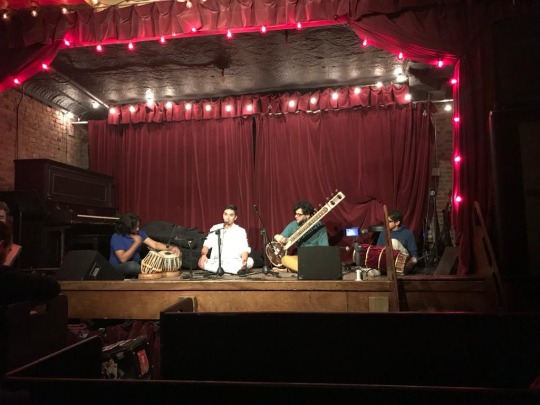
The venue was a real hole in the wall type bar with a small stage and seating area in the back, and there was a decent and rather diverse crowd of people. Dim lights and creaky wooden floors, very aesthetic. It’s interesting because now they’ve grown immensely as an organization, and I don’t believe they still have events at this place. It was really cool to see the really different talents displayed there – one woman performed a really interesting singing performance which now I can’t pinpoint what style it was. You also had more traditional classical instruments like tabla and sitar. What’s really cool is that even though I was only in eight grade and my cousin was only in ninth grade, they gave both of us the opportunity to play with them, and they were super friendly and inviting, even despite any mistakes or hesitation I had. There were no judgments, just the spirit of experimenting and playing. I still look at that night with a lot of fondness.
What I played that day, it was really incredible to get that opportunity and for it to be so low-key and welcoming. My cousin is also there on the stage (dressed in white), he’s an incredibly skilled Carnatic vocalist.
Recently I was inspired by all this and for my midterm assignment for the class I’m writing this for, I made a music track with mridangam and electronic effects in Ableton (free trial came clutch). I initially spent a lot of time worrying about doing it right and perfectly planning everything, but it only came together when I just let go of that and just messed around, re-arranging recordings of me playing and layering effects. Just doing it was fun, and I learned a lot from it.
youtube
shameless plug to my video
There’s a free-ness with something like this that’s a really different experience from traditional Carnatic music. At the same time, there’s a level of playfulness with Carnatic music too, as when you’re playing on stage you don’t practice with the other artist beforehand, and what happens there is often unexpected and exciting, and I’m reminded of that when I see jazz music too. To me says a lot about the inherent commonalities in what makes music so rewarding to make and experience.
#music blog#music discourse#music discussion#music#indie#new music#experimental music#carnatic#carnaticmusic#asian underground#south asia#south asian fusion#electronic music#mridangam#Youtube#long post
4 notes
·
View notes
Text
That's How I Know Taylor Swift
It was the summer of 2009, I was in the 5th grade. My sister had come home for her vacation. Her friend came over to exchange home assignments and also transfer some new music collection to our PC. Those were the days of PCs and pendrives. I had this curiosity to sit by the PC when someone was working on it and observe carefully whatever was being done–the files transferred, the keyboard shortcuts used and the entire technological mechanism seemed enthralling to me since always. As her friend, whom I called Dada (Brother) was doing his work, I kept staring at the monitor and kept tracking all the new music folders that were being pasted on our PC. Dada asked, " Do you listen to Western music? I have some cool collection". My sister was least interested because she was a Hindustani Classical singer and listened to Hindi songs only. My eleven-year old mind was open to some novelty. I said "Transfer whatever new music you have". My sister was crazy about the Twilight movie which was a huge phenomenon back then. She read the novel in her hostel and became a fan of Edward Cullen a.k.a Robert Pattinson. But it was difficult to watch the movie without the subtitles, obviously.
Having exchanged their assignments which was to be submitted to their school after the vacation, Dada left – left me fascinated to explore the brand new music, the Western music!
I was also being trained in Hindustaani Classical music along with my sister but I was always highly intrigued by the west; never quite had any exposure to it....and this was my golden opportunity to unlock the treasure!
I sat down and began my treasure hunt. My sister got busy with her projects and I, opening every folder that was created on the PC on a lookout for the music files. And finally found a folder which contained songs by various Western artists whose names I had never even heard of. There was Akon, Enrique, Owl City, Elvis Presley, Bryan Adams and all these were so, so new to me. I began playing those songs one by one and was so deeply moved by their musicality. But I couldn't comprehend the lyrics. We had BSNL broadband back then which gave 1 GB of data for monthly usage. It was a huge thing, I must say. I Googled and discovered azlyrics.com and lo! My work was half done. I played those songs on Windows Media Player and read the lyrics from the Chrome browser. And that was my entry to the world of Western music.
Akon 's "I'm So Paid" was a regular on-loop on my Philips mp3 player. Also, listened to "Lonely" and other hits by Akon. And then, I grooved to Summer of '69, Blue Suede Shoes, I Want It That Way, Somebody's Me, and several other superhits by various Western artists of the time.
One day, I found a folder that had some songs by female artists. There was a song titled "Butterfly Fly Away" and "I Miss You" by Miley Cyrus. Well, I had no idea who she was but I played those songs anyway. These songs were comparatively easier to understand and sing along. So, reading the lyrics from the browser tab, I began singing along. And that's how I learnt singing Western song!
Now, I was greedy to explore more female artists from the Western world. And then I found a video folder. God I tell you, that was the hidden treasure unlocked!
I found the music videos of Taylor Swift!!!
There were videos of Crazier, White Horse, Teardrops on my Guitar, Love Story, You Belong With Me and a few other. I was so deeply fascinated and enthralled and moved and touched by her voice that I decided she's going to be the Inspiration to my Western singing....and there was no looking back.
To understand her music, I didn't need azlyrics.com because she was so fluent and easy on her diction and pronunciation that I quickly understood and caught up with her songs. The soft melody in her voice and the beauty in her lyricals were just incredible to me. I instantly fell in deep love and admiration for Taylor Swift.
Next up, I began Googling other songs by her– her albums , latest releases and also her photos for my desktop wallpaper! She was my obsession, my guide, my mentor, my friend and most of all, my Guru. She was and is with me through the best of times and the darkest of phases. She has been my constant.
She taught me to be Fearless and to Speak Now without being so conscious of the Reputation built in people's minds. She left a Blank Space in my heart which is only to be filled by her. She inspired me to survive through the darkest Midnights and make it up with any Bad Blood. She has my heart and soul, and I know it All too Well.
Fun fact: I performed her songs playing the guitar in school and college events. Crazier being the first one, followed by Safe and Sound, Red, and several more to go!
6 notes
·
View notes
Text
youtube
Nalinakaanthi Raagam | Manavyalakincharadate | Indian fusion classical cover |Karthik Mohan
I have been looking forward to producing this song for the longest time. Composed in Nalinakaanthi, it is one of the most beautiful Carnatic songs composed by the great saint Thyagaraja. The true poetic nature of such songs can be understood and felt only in the language in which the song was written, in this case, Telugu. The song is sung in praise of Lord Rama who decided to incarnate himself on the earth and taught us the path of self-virtue and righteousness so we can free ourselves from the cycle of birth and death.
#music cover#indian classical fusion#karthik mohan#nalinakaanthi raagam#manavyalakincharadate#indian classical fusion cover#indian classical music#fusion music#carnatic music#hindustani music#cover song#vocal performance#classical music fusion#south indian classical music#musical performance#raaga-based fusion#classical melody#contemporary classical music#instrumental accompaniment#indian music rendition#music collaboration#fusion artist#Youtube
0 notes
Text
#103: "Call of the Valley" by Hariprasad Chaurasia, Brij Bhushan Kabra, and Shivkumar Sharma (1968)

so this is a Hindustani classical concept album, that uses the musical concept of "ragas," unique to music of this region. It's a little difficult to describe ragas, but they're basically melodic frameworks that have the ability to get across a specific idea or theme solely through music. There aren't any specific equivalents in western (read: European) classical music, but I have heard before that some ragas are tied to specific times of day, so a lullaby could be considered a point of reference, though lullabies don't have specific melodic frameworks that they play in.
so that's how this completely instrumental concept album gets across its story. being set in the day of the life of an Indian shepherd, the ragas of each piece are associated with differing times of day, so you sonically travel with the character and the suite of songs as they move through the day.
there's probably a cultural gap here, as while the ragas did provide me with some sense of passing through the times of day I'm unsure as to whether that was because of the compositions themselves or because I knew going in to the record that that's what i would be hearing. none the less, i found the music compelling and fascinating!
#hariprasad chaurasia#brij bhushan kabra#shivkumar sharma#call of the valley#the infinite playlist#1001albumsyoumusthearbeforeyoudie
2 notes
·
View notes
Text
Watch Legendary love story ghazal song Lafz Bheege Hain
Sufiscore celebrates an epic Indian love story, an ‘amour eternal’ on the new release Lafz Bheege Hain (“Words Drenched in Tears”). The album features lyrics from the esteemed contemporary poet, Ajay Sahaab with beautifully sung melodies from lead vocalist Pratibha Singh Baghel. The songs on Lafz Bheege Hain follow the story of unrequited love involving two eminent writers from India’s social justice-oriented Progressive Writers Movement, Punjabi Amrita Pritam (1919-2005) and Sahir Ludhianvi (1921-1980). Pritam, a novelist, essayist and poet, discusses her unrequited love for Ludhianvi, the poet and film lyricist, in her 1977 autobiography ‘Rasidi Ticket’ (a.k.a. The Revenue Stamp).
youtube
“There is a saying in India that if you want to express love, you resort to Urdu,” declares poet Ajay Sahaab. Sahaab drew on his lifelong passion for Urdu to evoke a familiar “tear-drenched” story that has almost acquired the status of a legend or folk tale.
Lafz Bheege Hain consists of five songs, modern in sound and conception, yet following the traditional form of the ghazal: a poem with rhyming couplets in prescribed patterns, usually sung in Urdu, the “love language” par excellence of the subcontinent. This great love story between Amrita Pritam and Sahir Ludhianvi has been depicted in literature and film — and in that spirit, director Parasher Baruah has created a sequence of videos to accompany all of the ghazals of Lafz Bheege Hain, featuring famed actors Prachi Desai and Som Chattopadhyay in the leading roles.
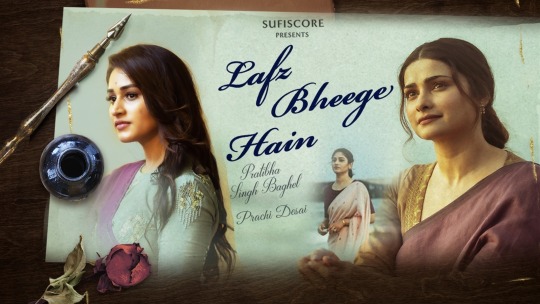
The emotions summoned by this love story”, says singer Pratibha Singh Baghel, “are held in common throughout the world. Those feelings of love and separation and sadness are the same everywhere. The poetry and compositions of Lafz Bheege Hain are for everybody who can relate to this.” Desai strikes a similarly universal chord: “I don’t know where we all find our strength, but after some of the biggest losses we ever have, we somehow make it through. It’s a hopeful message for anyone watching these videos or listening to this music.”
To capture these nuanced sentiments, composer Rajesh Singh drew upon what are known in Hindustani classical music as “evening ragas,” scales and tonalities associated with the time of day, he says, “when the solitude is very intense, and the melancholy and sadness comes throbbing upon us.” From these evening ragas come the beautiful melodies of Singh’s imagination. The rhythms are hypnotic; the lush, flowing chord progressions are informed by Western harmony but applied in such a way as to underline the ragas’ traditional character. “As a composer I had to find a correct mood and balanced sound to express the melancholy and divinity of pain portrayed in these ghazals,” adds Singh. “I observed that the pain of separation expressed by the poet here has no bitterness, and there is a subtle acceptance of separation due to social circumstances. Hence the notes had to be carefully woven not to sound depressing or negative.
Arranger and producer Paras Nath played a crucial role in bringing Singh’s compositions to life with rich and varied instrumentation and sonic character. “Because of Paras’ contribution,” says Pratibha Singh Baghel, “I was able to deliver the way that I did. So a lot of credit for this project goes to him.” Building upon Singh’s vision for each composition, Paras Nath reports trying “to enhance the feel of the ghazal. In every song I used something different.”
Cello, acoustic guitars, violin, viola and keyboards enter into the mix of Lafz Bheege Hain as well as Hindustani bansuri flute, the fretless sarod and the bowed sarangi. “Each instrument has its own character,” Paras Nath observes. “I didn’t want a loud arrangement,and I was careful not to overshadow the singing and the lyrics.”
Along with her extensive accomplishments in Indian musical theater and Bollywood playback singing, Pratibha Singh Baghel has devoted herself to the art of classical Hindustani music in a forward-looking, internationally minded modern vein. Lafz Bheege Hain is a vital part of that effort. To the poet Sahaab, the goal is to “revive the classicity of the ghazal,” bringing the traditional form into vibrant contact with Western elements before a worldwide audience. “In a very humble way but with energy,” says Sahaab, “we are trying to convey emotions so that modern generations can feel the intensity of words, music, poetry, composition and instruments.
“For me the songs on Lafz Bheege Hain are part of a single work of cinema,” says Parasher. “I wanted to narrate certain aspects of the story and portray universal themes of love and longing. I approached the cinematography with an idea of recreating the 1950s and ’60s, a personal homage to the heyday of Indian cinema when romance was celebrated in all its emotions, blending poetry with visual storytelling. Choosing to shoot in colonial Pondicherry and Mumbai, our choice of locations, production design and styling helped in this a lot.” For Prachi Desai, the alluring beauty of the audio tracks generated all the inspiration and excitement she needed: “When I first listened to Lafz Bheege Hain, time stopped,” she recalls. “I knew I had to be a part of this. I’m glad that this was my first ghazal ever.”
Lafz Bheege Hain
3 notes
·
View notes
Link
https://www.elirmusic.com
https://www.facebook.com/elirmusic/
https://elirmusic.bandcamp.com/album/silver-sails-2
https://open.spotify.com/album/1kDkupv3mDkwssE07G2H8G
2 notes
·
View notes
Photo
[Image Description: A chart titled “Choose your pokemon type based on the music you most listen to (you can be single or dual-typed)”. Each type has a picture of a Pokémon of that type next to it.
Grass: folk, country, blues, traditional/world folk, eastern classical, hindustani/ragga
Bug: techno, idm, breakbeat, electro, electroclash, shangaan electro
Normal: top 40 pop, soft rock, adult contemporary, showtunes, musical comedy, novelty songs
Electric: garage rock, power pop, britpop, british invasion, 50s rock-roll, hard rock
Ice: synth pop, new wave, synthwave, minimal wave, ebm, city pop
Dark: post-punk, goth/deathrock, industrial, dark/ethereal wave, dark cabaret, new beat
Glitch: glitch, indeterminacy, electroacoustic, lowercase, eai, asmr
Fire: Hip-hop, funk, rocksteady/reggae, ska/2-tone, dub, soul/r&b
Poison: drum n bass, hardcore. dubstep, uk garage, grime/nu-grime, trap/wonky
Rock: blues rock, psychedelic rock, heavy psych, glam rock, stoner rock, noise rock,
Fighting: punk rock, hardcore punk, emo, math rock, post-rock, crescendo-core
Ghost: shoegaze, dream pop, neo-psychedelia, witch house, bedroom pop, drone
Dragon: western classical, medieval, baroque, choral, opera, modem classical
Shadow: harsh noise, power electronics, power noise, japanoise, wall noise, extreme music
Water: House, downtempo/chillout, trip-hop, exotica, balearic, chillwave
Flying: jazz, jazz fusion, vocal jazz, big band, swing, free improvisation
Ground: heavy metal, sludge metal, black metal, doom metal, blackgaze, post-metal/atmospheric
Psychic: trance/dream trance, new age, progressive electronic, musik kosmiche/berlin school, ambient, vaporwave
Steel: progressive rock/metal, symphonic rock/metal, folk metal. melodic/power metal, death metal, metalcore/nu-metal
Fairy: Disco/nu-disco, eurobeat, teen pop, j-pop & k-pop, chiptunes, bubblegum bass
??? (three question marks) (curse): library music, hauntology. plunderphonics, number stations, radio plays, sound poetry. End Description.]
@a-captions-blog

I’m going to have to go WATER/BUG
96K notes
·
View notes